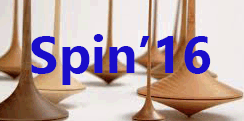Speaker
Description
The HDice frozen spin, solid Hydrogen-Deuteride target has been used in recent years with photon beams in Jefferson Lab’s Hall B. With the recent upgrade of the Hall’s CLAS detector and Jefferson Lab’s CEBAF accelerator come new physics opportunities to study the 3D structure of the nucleon. In this vein, there are presently three A-rated experiments which have been designated as having a “high impact” for the Hall B physics program, each requiring the use of a transversely polarized target. Targets with spin transverse to electron beams pose a challenge, since the associated holding fields bend the beam into the detector. Frozen-spin targets that require only modest magnetic fields present a potential solution. However, new depolarization mechanisms arise when using the HDice target with charged particle beams. In order to study these mechanisms and methods to abate them, a new low-energy accelerator is being built at Jefferson Lab. This accelerator (the Upgraded Injector Test Facility, or UITF) will deliver electrons to the HDice target at an energy of ∼10 MeV. Although energy loss varies rapidly with beam energy, it is dominated by bremsstrahlung that has no effect on the HD material. The energy deposited in the target, which does influence performance, is almost independent of beam energy. As a result, effects studied at the UITF can be directly related to the expected performance with 10 GeV beams delivered to HDice in Hall B. Depolarization mechanisms from charged particles, the UITF eHD tests, as well as plans for running e+HD experiments in Hall B with CLAS12 will be discussed.
